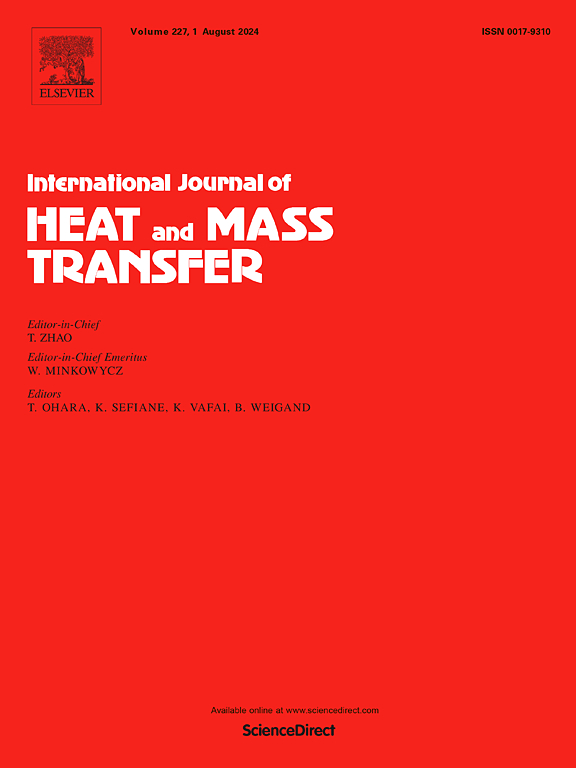IF 5
2区 工程技术
Q1 ENGINEERING, MECHANICAL
International Journal of Heat and Mass Transfer
Pub Date : 2025-03-10
DOI:10.1016/j.ijheatmasstransfer.2025.126923
引用次数: 0
摘要
超临界流体的独特物理特性导致其传热具有明显的入口效应。本研究采用实验和模拟两种方法,系统地研究了超临界水在水平管中的入口效应对传热特性的影响。根据边界条件的变化,将超临界水的加热过程分为三个阶段:热建立阶段、轴向渐近发展阶段(AADS)和热去除阶段。每个阶段都有明确的定义,并对其传热特性进行了分析。受入口效应的影响,热建立阶段表现出卓越的传热性能。在水平管道中,浮力引起的热分层和二次流显著扩大了入口效应的范围,并加剧了其影响。入口效应的影响范围超过管道直径的 150 倍,有可能将整体传热系数提高 30%。更高的热通量、更低的质量通量以及更明显的物理性质变化都会增强入口效应。在实验数据的基础上,开发了一种传热相关性,它排除了管壁温度参数或与管壁温度相关的参数,同时有效地捕捉了入口效应的影响。这项研究为利用入口效应缓解传热恶化和提高热交换器性能提供了宝贵的见解。本文章由计算机程序翻译,如有差异,请以英文原文为准。
Entrance effect on supercritical water heat transfer in horizontal tubes: Enhanced heat transfer performance and new correlation development
The unique physical properties of supercritical fluids result in a pronounced entrance effect on heat transfer. This study systematically investigates the influence of the entrance effect on heat transfer characteristics of supercritical water in a horizontal tube using both experimental and simulation methods. Based on variations in boundary conditions, the heating process of supercritical water is divided into three stages: the Thermal Establishment Stage, the Axially Asymptotic Developed Stage (AADS), and the Thermal Removal Stage. Each stage is clearly defined, and its heat transfer characteristics are analyzed. The Thermal Establishment Stage, influenced by the entrance effect, exhibits superior heat transfer performance. In horizontal tubes, buoyancy-induced thermal stratification and secondary flow significantly extend the range of the entrance effect and intensify its impact. The influence of the entrance effect extends over 150 times the tube diameter, potentially increasing the overall heat transfer coefficient by >30 %. Higher heat flux, lower mass flux, and more pronounced changes in physical properties enhance the entrance effect. Based on experimental data, a heat transfer correlation is developed that excludes wall temperature parameters or those dependent on wall temperature, while effectively capturing the influence of the entrance effect. This study provides valuable insights into utilizing the entrance effect to mitigate heat transfer deterioration and improve heat exchanger performance.
求助全文
通过发布文献求助,成功后即可免费获取论文全文。
去求助
来源期刊
CiteScore
10.30
自引率
13.50%
发文量
1319
审稿时长
41 days
期刊介绍:
International Journal of Heat and Mass Transfer is the vehicle for the exchange of basic ideas in heat and mass transfer between research workers and engineers throughout the world. It focuses on both analytical and experimental research, with an emphasis on contributions which increase the basic understanding of transfer processes and their application to engineering problems.
Topics include:
-New methods of measuring and/or correlating transport-property data
-Energy engineering
-Environmental applications of heat and/or mass transfer

 求助内容:
求助内容: 应助结果提醒方式:
应助结果提醒方式:


